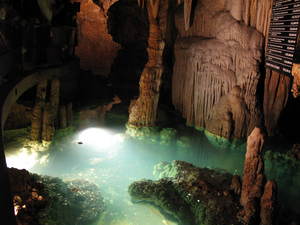Too often students become entirely lost when trying to understand philosophy. Professors only make matters worse with complicated explanations and poor examples, leaving students in the dark. Philosophy can be frustrating, but it does not have to be, and many sites have popped up trying to explain things like Plato’s “Cave” metaphor, but still don’t explain in clear language what it means. So presented here is a simple, straightforward explanation of Plato’s “Cave” metaphor, which every philosophy student will have to deal with early on.
The Cave metaphor appears in Plato’s Republic, an ancient Greek philosophy text that covers topics ranging from attaining perfection to building the perfect state and creating philosopher-kings.
Finding the Ultimate Good
Plato created this analogy as a way of introducing the idea of finding the ultimate good (knowledge, truth, justice, call it what you will). In the metaphor, a group of people are seated and chained while facing a wall deep in a cave. Behind them is an elevated walkway where others carry objects. A fire behind these objects projects their shadows onto the wall which is the only thing the chained people can see.
To those seated people who know nothing else, these shadows are reality. They are not shadows of objects but the objects themselves. All judgments and knowledge and opinions are formed without knowing the true source of the shadow, so imagination is valued and ignorance is rampant.
Philosopher-kings
One of these people is then unchained and freed (later on it is learned that the person who does the freeing could be the philosopher-king mentioned later in The Republic. The freed person is then turned around and exposed to the fire and objects. Imagine all that you know as reality suddenly being false and having to learn a whole new reality. This painful process is the beginning of education.
Then the freed person is taken out of the cave and into the bright sunlight. After a life of darkness (ignorance), there is pain as the eyes adjust to the rays of the sun. As the eyes gradually adjust, the freed person can begin to understand relations between objects. For example, the sun causes light, the light causes heat, and so forth. The learning process continues and once he discovers the ultimate Good/Justice/Knowledge, he knows the true form of everything. In a way you could call this reaching perfection of knowledge. For a real world example, a carpenter would have to know the “true form” of a perfect chair in order to judge and compare the quality of other chairs. Needless to say this perfection is impossible to reach in the real world.
Returning to Educate the Masses
Now that the freed person has attained this ultimate knowledge of something, he can never go back to being ignorant like he was in the cave, even if he wanted to. The next step is to return to the cave to educate the people still chained. Most likely he would be ridiculed for preaching something so different from their accepted reality. Regardless the freed person will be the happiest because he knows the truth, the ultimate good.
This Cave metaphor is virtually identical to Plato’s “Line” metaphor, but uses different imagery. In very short, simple language, the Line Metaphor and the Cave Metaphor simply list the steps necessary in education. We first rely on our imaginations and then rise up through varying degrees of exposure (we know a little more when faced with the actual objects in the cave, then a little more once we go out of the cave, then more once our eyes adjust to the sunlight, etc.). The Cave metaphor is, in the end, as simple as it appears here.


